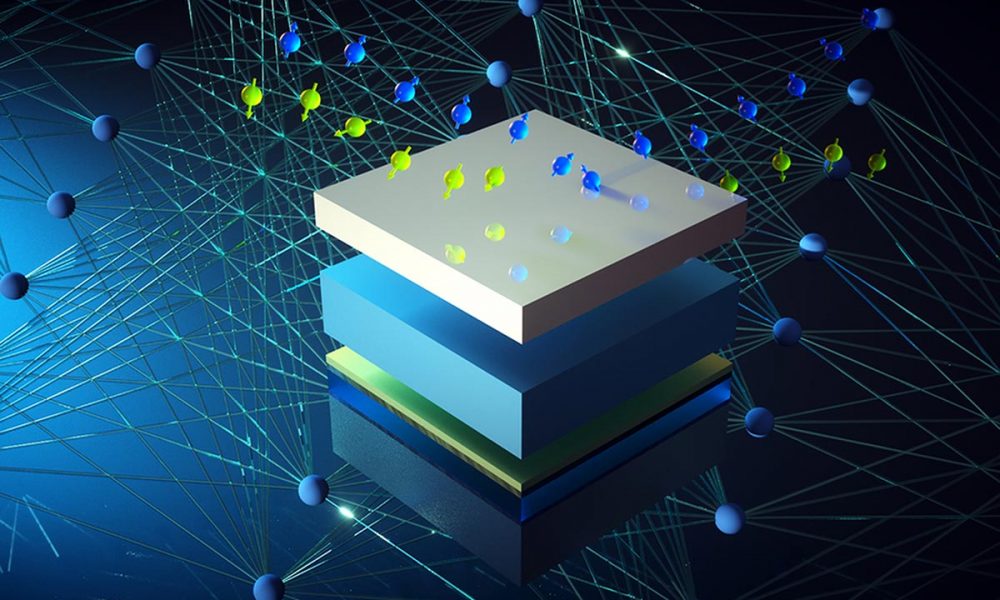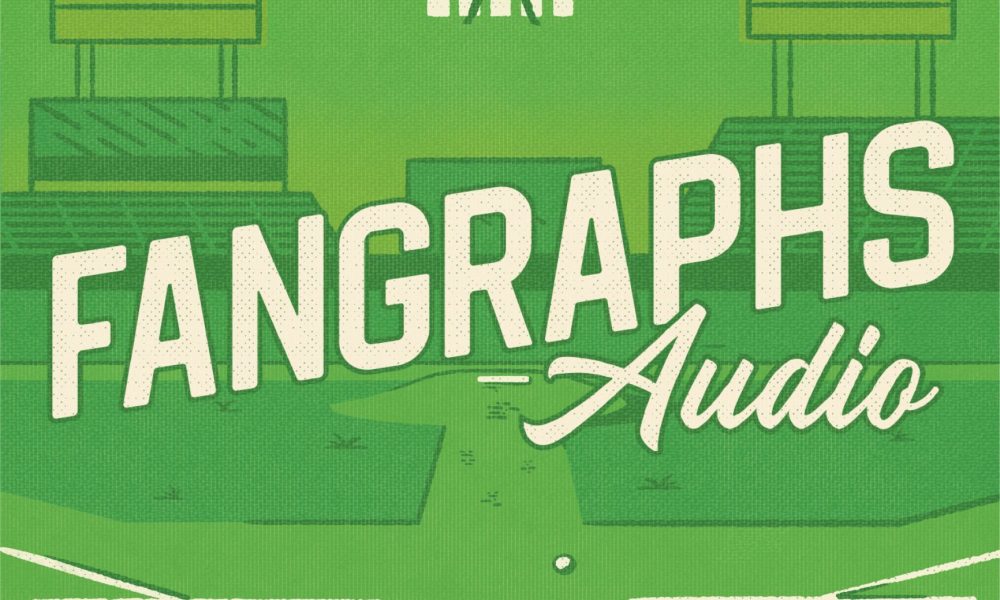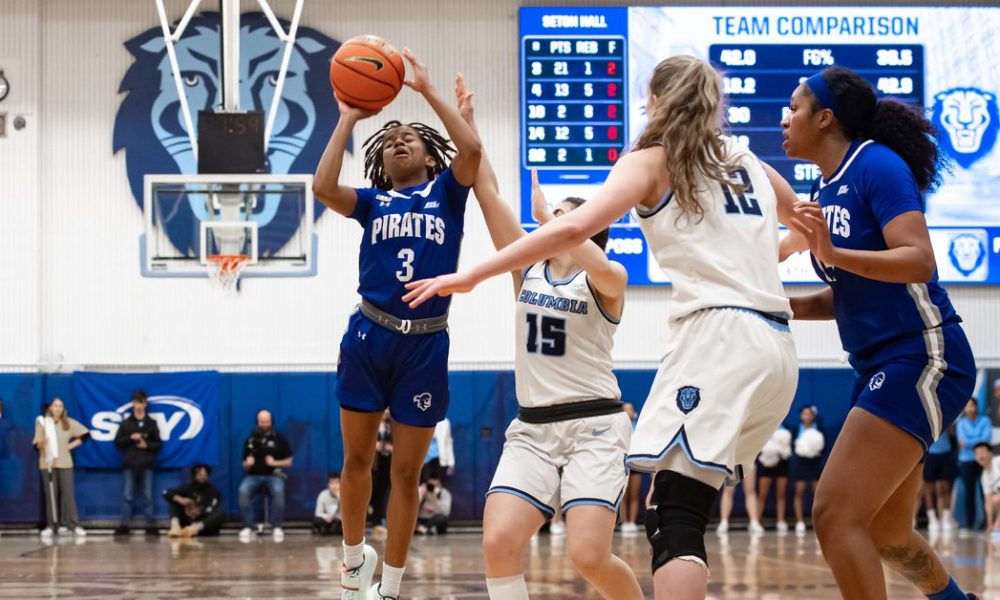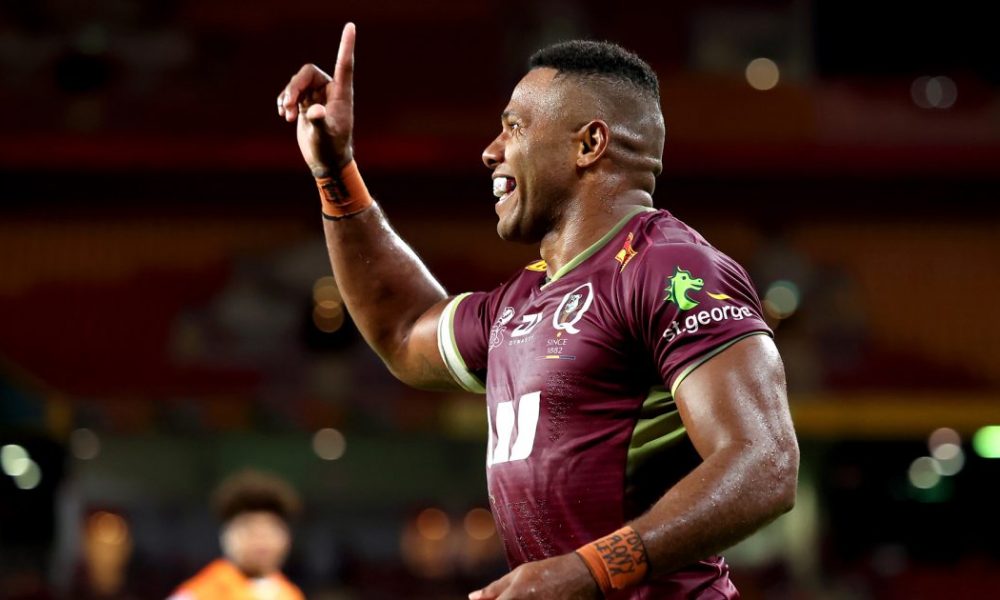Teen Patti Master, Teen Patti Master Apk, Teen Patti Master Apk Download, Teen Patti Master App, Teen Patti Master Game, Teen Patti Master Online, 3 Patti Master दोस्तों तीन पत्ती मास्टर इंडिया में काफी तेजी से Grow हो रहा है, ऐसे में यदि आप भी Teen Patti Master Apk Download करना चाहते है. तो आप यह आर्टिकल Teen Patti Master Apk Download 2022 – Get ₹100 Bonus पूरा जरुर पढ़िए. क्योकि इस आर्टिकल में मैंने Teen Patti Master App Download Link दिया है. साथ ही साथ बताया है, की आप तीन पत्ती मास्टर से पैसा कैसे कमा सकते है. Teen Patti Master App Article Teen Patti Master Apk Download Bonus ₹100 Size 40 MB Refer Income ₹20 + 30% Deposit Minimum Withdraw ₹100 Download Link Click Here Teen Patti Master App Review दोस्तों तीन पत्ती मास्टर एक रियल कैश तीन पत्ती गेम है. जिसपर आप कार्ड सबंधित गेम खेलकर पैसा जित सकते है. जिसे आप अपने बैंक अकाउंट में विथ्द्रव कर सकते है. Teen Patti Master App इंडिया का नंबर 1 तीन पत्ती ऐप है, जिसका डाउनलोड 10M+ से भी अधिक है. Teen Patti Master App में Login होते ही 100 रुपए का बोनस मिलता है. जिससे आप सभी प्रकार के गेम खेल सकते है. Teen Patti Master Apk Download Step 1. सबसे पहले निचे दिए Download बटन पर क्लिक कीजिये. Teen Patti Master Step 2. बटन पर क्लिक करते ही आप तीन पत्ती मास्टर ऐप वेबसाइट पर चले जायेगे. Step 3. आप Download Now बटन पर क्लिक कीजिये. Step 4. फिर OK Option पर क्लिक कीजिये. आपके मोबाइल में Teen Patti Master Apk Download होने लगेगा, डाउनलोड होने के बाद आप तीन पत्ती मास्टर इनस्टॉल & ओपेन कीजिये. Note :- यदि Teen Patti Master App Installनहीं होता है, तो आप File Manger App में जाइये. फिर वहा आप Apk पर क्लिक कीजिये. अब Uninstall Apk में जाइए. फिर Teen Patti Master App Install कीजिये. Teen Patti Master App Login Step 1. Teen Patti Master App ओपेन कीजिये. Step 2. फिर Mobile Number डालकर Login बटन पर क्लिक कीजिये. Step 3. आपके Mobile Number पर OTP आएगा. Step 4. जिसे डालकर Submit कीजिये. आप सफलतापूर्वक Teen Patti Master Game में लॉग इन हो जायेगे. साथ ही साथ आपको 100 रूपये का बोनस मिल जायेगा. Teen Patti Master App Daily Login Day 1 = 5 Day 2 = 6 Day 3 = 7 Day 4 = 8 Day 5 = 9 Day 6 = 10 Day 7 = 135 तीन पत्ती मास्टर से पैसा कैसे कमाए? Teen Patti Master में उपस्थित आप सभी प्रकार के गेम खेलकर पैसा कमा सकते है. जिस भी गेम में आपका इंटरेस्ट है. आप उस गेम पर क्लिक करके उस गेम को खेलिये. और अधिक से अधिक पैसा जीतिए. Teen Patti Master Game List Teen Patti Point Rummy Crash Jhandi Munda 7Up Down Andar Bahar Car Roulette Dragon vs Tiger Red Vs Black 777 Slot Bikini Paradise 3 Patti War Wingo Lottery Golden India Cricket Heroes Baccarat AB यदि आप Teen Patti Master App से Unlimited Earning करना चाहते है, तो आप Dragon vs Tiger Game खेलिये. Teen Patti Master Refer And Earn दोस्तों आप Teen Patti Master App से सिर्फ Refer And Earn के माद्यम से हर महीने 1 लाख रूपये तक कमा सकते है. निचे दिए Process Follow कीजिये. और तीन पत्ती मास्टर रेफ़र एंड एअर्ण से पैसा कमायें. Step 1. तीन पत्ती मास्टर ऐप ओपेन कीजिये. Step 2. फिर निचे दिए Refer And Earn Option पर क्लिक कीजिये. Step 3. अब अपना Refer Link Copy कीजये, और उसे Whatsapp या Facebook पर शेयर कीजिये. Step 4. आपको प्रति रेफ़र 20 रूपये + 30 Deposit Commission Lifetime तक मिलता रहेगा. जिसे आप Refer And Earn पर क्लिक करके प्राप्त कर सकते है. फिर Wining Amount बैंक अकाउंट में विथ्द्रव कर सकते है. Teen Patti Master App Withdraw Money Step 1. तीन पती मास्टर ऐप से पैसा निकलने के लिए ऊपर दिए Withdraw बटन पर क्लीक कीजिये. Step 2. फिर Fill Information पर क्लिक करके अपना Name & Email Submit कीजिये. Step 3. अब आप Withdraw के लिय 100 रुपए Add कीजिये. Step 4. फिर अपना Bank Account Detail डालकर Submit कीजिये. Step 5. Withdraw Amount Select करके Withdraw बटन पर क्लिक कीजिये. Withdraw अमाउंट आपके बैंक अकाउंट में तुरंत Received हो जायेगा. Teen Patti Master Add Cash Offer दोस्तों यदि आप तीन पत्ती मास्टर ऐप में 300 रूपये का Add Cash करते है. तो आपको 1 Spin मिलेगा. जिस्सके आपको 2500 रूपये का मिल सकते है. Note :- यह ऑफर केवल New User के लिए है, Old User इसका लाभ नही ले सकते है.
Donaldson daring to dream after shock Wallabies call-up
Ben Donaldson started the 12-month race for the Waratahs’ No. 10 jersey, but by July the rising hotshot would be but a wallaby. The 22-year-old is one of eight uncapped players to feature in a 40-man squad on the Gold Coast over the following three days as Australia prepare for the three home stages with England in the July global window. Donaldson is undoubtedly one of the squad’s bolters but earned the shot in robust manner to start the Super Rugby Pacific season and wanted to be safe at half-time while leading the Tahs to a 4-3 result en route served for her first bye. Speaking from the Gold Coast, Donaldson said he was pleased with how he started the marketing campaign, but acknowledged there was plenty of room for improvement. “It was a bit of a struggle there with Harro (Will Harrison) and Tane (Edmed), there’s some good 10’s on the Tahs at the moment which is really good for the contenders,” he said. “I’m pretty happy with my style, a bit inconsistent. “Sure, there are just a few problems – lots of problems – I’m working on getting better at video games. “I’m certainly not the whole player but one of the main things I’m dealing with at the moment is just my consistency and especially as a 10, trying to limit some mistakes.” Most recently this season, Donaldson had played a consistent time and said he’s discovering his feet. “Because of accidents on the bench last year and before that, it’s quite difficult, especially as a tenth, to improve as a player if you don’t get 80 minutes,” he said. (Image by Pete Dovgan/Pace Media/Icon Sportswire via Getty Photographs) “That’s the main factor of just participating in full video games.” Donaldson faces an enormous task to create the best squad for the England Trials, with Wallabies flyhalps James O’Connor and Noah Lolesio added to the coaching staff and the likelihood of Quade Cooper being named one of three viable overseas Player. However, he is joined by a few other U-20 representatives in the squad who led Australia to the remainder of the 2019 World Cup along with Lolesio, Lachie Lonergan, Angus Bell, Fraser McReight and Harry Wilson. That inspired Donaldson that he was headed in the right direction to establish himself as one of the main halves of many nations. “It feels like home, there’s a bunch of us from the ’20s here, a bunch of good guys and experienced players who’ve worked with the Wallabies before,” he said. “It’s just more exciting for Australian rugby as a whole to move forward with a big group of younger guys. “Also on the tahs some boys are discovering their feet and some boys are making the transfer to the squad right here.” Donaldson said he recently returned to work after suffering a calf injury and plans to return to the Tahs team after leaving next week. The coaching staff consists of 15 Brumbies, 10 Waratahs, 8 Reds, 4 Rebels and 3 Western Power players. >> Go here for the entire Wallabies squad
MIT Uses AI To Discover Hidden Magnetic Properties in Multi-Layered Electronic Material
MIT researchers discovered hidden magnetic properties in multilayer electronic material by analyzing polarized neutrons with neural networks. Credit: Ella Maru Studio A[{” attribute=””>MIT team incorporates AI to facilitate the detection of an intriguing materials phenomenon that can lead to electronics without energy dissipation. Superconductors have long been considered the principal approach for realizing electronics without resistivity. In the past decade, a new family of quantum materials, “topological materials,” has offered an alternative but promising means for achieving electronics without energy dissipation (or loss). Compared to superconductors, topological materials provide a few advantages, such as robustness against disturbances. To attain the dissipationless electronic states, one key route is the so-called “magnetic proximity effect,” which occurs when magnetism penetrates slightly into the surface of a topological material. However, observing the proximity effect has been challenging. The problem, according to Zhantao Chen, a mechanical engineering PhD student at MIT, “is that the signal people are looking for that would indicate the presence of this effect is usually too weak to detect conclusively with traditional methods.” That’s why a team of scientists — based at MIT, Pennsylvania State University, and the National Institute of Standards and Technology — decided to try a nontraditional approach, which ended up yielding surprisingly good results. What lies beneath, and between, the layers For the past few years, researchers have relied on a technique known as polarized neutron reflectometry (PNR) to probe the depth-dependent magnetic structure of multilayered materials, as well as to look for phenomena such as the magnetic proximity effect. In PNR, two polarized neutron beams with opposing spins are reflected from the sample and collected on a detector. “If the neutron encounters a magnetic flux, such as that found inside a magnetic material, which has the opposite orientation, it will change its spin state, resulting in different signals measured from the spin up and spin down neutron beams,” explains Nina Andrejevic, PhD in materials science and engineering. As a result, the proximity effect can be detected if a thin layer of a normally nonmagnetic material — placed immediately adjacent to a magnetic material — is shown to become magnetized. But the effect is very subtle, extending only about 1 nanometer in depth, and ambiguities and challenges can arise when it comes to interpreting experimental results. “By bringing machine learning into our methodology, we hoped to get a clearer picture of what’s going on,” notes Mingda Li, the Norman C. Rasmussen Career Development Professor in the Department of Nuclear Science and Engineering who headed the research team. That hope was indeed borne out, and the team’s findings were published on March 17, 2022, in a paper in Applied Physics Review. The researchers investigated a topological insulator — a material that is electrically insulating in its interior but can conduct electric current on the surface. They chose to focus on a layered materials system comprising the topological insulator bismuth selenide (Bi2Se3) interfaced with the ferromagnetic insulator europium sulfide (EuS). Bi2Se3 is, by itself, a nonmagnetic material, so the magnetic EuS layer dominates the difference between the signals measured by the two polarized neutron beams. However, with the help of machine learning, the researchers were able to identify and quantify another contribution to the PNR signal — the magnetization induced in the Bi2Se3 at the interface with the adjoining EuS layer. “Machine learning methods are highly effective in eliciting underlying patterns from complex data, making it possible to discern subtle effects like that of proximity magnetism in the PNR measurement,” Andrejevic says. When the PNR signal is first fed to the machine learning model, it is highly complex. The model is able to simplify this signal so that the proximity effect is amplified and thus becomes more conspicuous. Using this pared-down representation of the PNR signal, the model can then quantify the induced magnetization — indicating whether or not the magnetic proximity effect is observed — along with other attributes of the materials system, such as the thickness, density, and roughness of the constituent layers. Better seeing through AI “We’ve reduced the ambiguity that arose in previous analyses, thanks to the doubling in the resolution achieved using the machine learning-assisted approach,” say Leon Fan and Henry Heiberger, undergraduate researchers participating in this study. What that means is that they could discern materials properties at length scales of 0.5 nm, half of the typical spatial extent of proximity effect. That’s analogous to looking at writing on a blackboard from 20 feet away and not being able to make out any of the words. But if you could cut that distance in half, you might be able to read the whole thing. The data analysis process can also be sped up significantly through a reliance on machine learning. “In the old days, you could spend weeks fiddling with all the parameters until you can get the simulated curve to fit the experimental curve,” Li says. “It can take many tries because the same [PNR] Signal could correspond to different combinations of parameters.” “The neural network gives you an instant answer,” Chen adds. “There is no more guesswork. No more trial and error.” For this reason, the framework has been installed in some reflectometry beamlines to support the analysis of broader material types. Some outside observers have praised the new study — it’s the first to assess the effectiveness of machine learning in identifying the proximity effect and among the first machine-learning-based packages to be used for PNR data analysis. “The work of Andrejevic et al. provides an alternative way to capture fine detail in PNR data and shows how higher resolution can be consistently achieved,” said Kang L. Wang, Distinguished Professor and Raytheon Professor of Electrical Engineering at the University of California, Los Angeles. “This is really exciting progress,” commented Chris Leighton, Distinguished McKnight University Professor at the University of Minnesota. “Their new approach to machine learning could not only significantly speed up this process, but also extract even more material information from the available data.” The MIT-led group is
FanGraphs Audio: Skilled Positional Energy Rankers
Episode 968 On this week’s podcast, Dan Szymborski and Ben Clemens discuss their work on the 2022 Position Power Rankings. Dan wrote about the league’s catchers, so the duo focuses on Will Smith’s underhanded fame, Yasmani Grandal’s wild stat line for 2021, and the way the importance of framing is making Salvador Perez a controversial backstop. Meanwhile, Ben has lined second and third base, so we also get to know where Luis Arraez fits in for the Twins (and their odd scenario at third place), Gleyber Torres’ career and whether or not Ben thinks he’d give Jose Altuve a Corridor of Fame vote when the time comes. Finally, Ben shares his favorite online game of the last 12 months, and it’s most likely not what you think it is. To purchase a FanGraphs membership for yourself or as a gift, click here. To donate to FanGraphs and help us keep issues going, click here. Feel free to send any pod-related correspondence to @dhhiggins on twitter. You can subscribe to the podcast through iTunes or other feeder products. Audio after the bounce. (Approximately 50 minutes playing time.) Podcast: Play in new window | Download Subscribe to:
2022 NCAA Match groups exhibit the worth of the Ladies’s NIT
Currently, when Seton Corridor and South Dakota State meet in the WNIT closure, the winner gets their first WNIT title, but not their only prize. In current seasons, the champions of this postseason match have often seen a direct leap into the success of this system, and often a stepping stone to NCAA success. Just check out the remaining 4 from last season when the Arizona Wildcats made a Cinderella run to the statewide semifinals. The group’s match success didn’t come as a huge shock to the Wildcats themselves, however. Arizona clearly had more religion in its personal abilities than the rest of the nation, and some of that stemmed from the group’s success in a single-elimination game two years ago, the WNIT. After the Wildcats’ win in 2019, their biggest contender, Aari McDonald, was clear on what the route of this system needed to be, as she told local media: “It’s going to be scary for sure over the next 12 months,” McDonald said. “We have a full summer ahead of us to get higher. After that, with the know-how that comes in, we can build something special this year and hopefully do the NCAA match and just run and make some noise. That NCAA game run was delayed a year because of the pandemic, but Arizona delivered on that promise — and some — in 2021. The Wildcats even snagged an opportunity to host game games in 2022 despite an injury-plagued end to the season. Arizona is easily the latest group to build their WNIT success. A Candy 16 matchup in Wichita featured two current WNIT champions, the South Dakota Coyotes and the Michigan Wolverines. The 2016 win was a program-defining win for the Coyotes as South Dakota was able to announce Daybreak Plitto far from northern Kentucky to tutor the group. Plittowide led the Coyotes to two additional WNIT berths before breaking through to the 2019 NCAA game. South Dakota has been a fixture of the game ever since, culminating in the college’s first win of the season. Meanwhile, Michigan received the WNIT in 2017 and hasn’t returned to that invitation since. Coach Kim Barnes Arico led the Wolverines to their NCAA match for the first time alongside their personal recruits the following season, and Michigan has since blossomed into a Huge Ten powerhouse. The Wolverines made it to the college’s first Candy 16 in 2021 and the group’s first Elite Eight in 2022. Though Arico thought her team would qualify for the 2017 Huge Dance, that failure was a blessing in disguise, as she told the Associated Press in March: “It was one of the hardest nights of my life,” she said. “We held up a WNIT banner and that was a turning point for this system.” Michigan’s Huge Ten compatriots have an identical history. 2018 champion Indiana Hoosiers has not missed the NCAA match since winning the WNIT title 4 years ago. Jaelyn Penn, who performed in Indiana for 4 years before competing for UCLA this season, shared The next how that second was a turning point for the Hoosiers program. Penn hoped the Bruins’ WNIT successes this season could be an identical launch pad before the group was moved in Thursday’s semifinals. “I just know from experience how much it helps this system, how much bigger it is than just ourselves,” Penn said. “We’ve got that, the inspiration is ready to move that system forward, the women are coming over the next 12 months and the way we’re holding our ground in the years following that win. It’s hugely important that we go forward and win that factor and just realize that it’s bigger than us.” The Bruins even have their own expertise in turning a WNIT championship into an NCAA match success. In 2015, UCLA earned the WNIT with freshmen Jordin Canada and Monique Billings, and this duo made the match their next three seasons, culminating with an Elite Eight look as seniors. Fifth-year senior Natalie Chou said coach Cori Close used a video from 2015 as motivation for that year’s Bruins, such as the inspiration a WNIT run can provide. “We remembered that Coach Cori set up this group and made it successful [tournament] actually created momentum for the next few years. We just want to create and continue the momentum and create that form of legacy for the groups that follow.” It’s worth noting that the WNIT isn’t owned by the NCAA, like the boys’ match (another example of the lack of equality between men’s and women’s basketball!). Colleges have to pay to play, so a group’s participation could be an indicator of support for their athletic department. Subsequently, it is tedious to determine whether the future program’s success is due to WNIT’s experience or the support of a faculty supporting their girls’ basketball group. A reminder because the NCAA celebrates 68 teams in each of the NCAA boys’ and girls’ tournaments: The NCAA owns the boys’ NIT, so it also sponsors 32 additional postseason men’s alternates. It does not personalize the WNIT. Faculties then pay up to 1/4 of 1,000,000 to attend. — Chantel Jennings (@ChantelJennings) March 31, 2022 In this WNIT chicken-or-egg situation, it may not matter whether the financial backing comes from post-season success or vice versa; the results are difficult to argue. After seeing the crowds that WNIT has drawn — even in Columbia, a program that has little basketball history, it’s clear that there are several postseason games of significance in the girls’ free time. Groups that choose not to participate, like Duke in 2022, lack a useful environment. Also, they lack the ability to significantly develop their packages. If the current past is to be predictive, keep an eye on the Seton Corridor and the State of South Dakota for the following NCAA tournaments. Just like the champions that have preceded them, their time will come. recovery data WNIT Remaining: Seton Corridor (24-12) vs. South Dakota State (28-9) When: Saturday, April 2, 2022 at
Reds outplay the Brumbies to take pole place on Tremendous Rugby Pacific ladder
7:20 am, April 02, 2022 The Queensland Reds have defied another purple card to end the Brumbies’ unbeaten run and play at the top of the Super Rugby Pacific Ladder with their Australian rivals. A 21-7 triumph ensured the hosts continued their seven-year unbeaten run towards Canberra at Suncorp Stadium. Full-back Jordan Petaia mixed brilliance with blunders while continuing his full-back training. Victory came despite a 30th-minute purple card for backrower Tuaina Tualima when his cleanout hit James Slipper extremely, the Reds scoring decisively through Fraser McReight during the 20-minute break when they were one person down. The Brumbies had been the crew to beat in Super Rugby Pacific. The Brumbies had been the crew to beat in Super Rugby Pacific. Tualima, who only started when Liam Wright injured his ankle in warm-up, said goodbye to Dane Zander, who had seen purple a week earlier, while Taniela Tupou was cited for the same loss to the NSW Waratahs two weeks ago. Brumbies backrower Rob Valetini and second Cam Clark, who scored the game’s first try, had each received second-half yellow cards for an excessive deal and an intentional knockdown. Clark’s effort gave the Brumbies a 7-3 lead, but the Reds stayed in the game despite firm fumbling as there were scrum penalties and twice stopping the visitors’ mighty rolling maul on their line. Petaia’s nighttime wobbled, the team made a clear breakthrough in the middle of the sector late in the first half but didn’t seek his help when a pursuit went begging. Remaining concerned about the resumption, he jostled for and caught a James O’Connor bombshell, leading to McReight’s effort to turn the match around. His kicks for contact were additionally secured and deep in a fourth consecutive look at the Wallabies training camp full-back the following week. However, his performance was marred by a series of mishaps, a push that robbed a wide-open Filipo Daugunu of a safe try moments before the winger crossed for the eventual match-sealer in his 50th Super Rugby game. McReight was among the biggest Reds, while Valetini was the Brumbies’ work sport’s main target and Nick Frost continued his robust 2022 style. – Murray Wenceslaus
Could We Make Cars Out of Petroleum Residue?
Through David L. Chandler, Massachusetts Institute of Technology April 1, 2022 A new method of making carbon fiber could turn refinery by-products into high-quality, ultra-lightweight structural materials for cars, planes and spacecraft. As the world struggles to improve the efficiency of cars and other vehicles to reduce greenhouse gas emissions and increase the range of electric vehicles, the search is on for ever lighter materials that are strong enough to be used in car bodies. Lightweight carbon fiber materials, similar to the material used in some tennis racquets and bicycles, combine exceptional strength with low weight, but were more expensive to manufacture than comparable steel or aluminum structural members. Well, researchers at[{” attribute=””>MIT and elsewhere have come up with a way of making these lightweight fibers out of an ultracheap feedstock: the heavy, gloppy waste material left over from the refining of petroleum, material that refineries today supply for low-value applications such as asphalt, or eventually treat as waste. Not only is the new carbon fiber cheap to make, but it offers advantages over the traditional carbon fiber materials because it can have compressional strength, meaning it could be used for load-bearing applications. The new process is described on March 18, 2022m in the journal Science Advances, in a paper by graduate student Asmita Jana, research scientist Nicola Ferralis, professor Jeffrey Grossman, and five others at MIT, Western Research Institute in Wyoming, and Oak Ridge National Laboratory in Tennessee. A circle of carbon fibers which have a diameter of about 10 micrometers. Credit: Nicola Ferralis The research began about four years ago in response to a request from the Department of Energy, which was seeking ways to make cars more efficient and reduce fuel consumption by lowering their overall weight. “If you look at the same model car now, compared to 30 years ago, it’s significantly heavier,” Ferralis says. “The weight of cars has increased more than 15 percent within the same category.” A heavier car requires a bigger engine, stronger brakes, and so on, so the reducing the weight of the body or other components has a ripple effect that produces additional weight savings. The DOE is pushing for the development of lightweight structural materials that match the safety of today’s conventional steel panels but also can be made cheaply enough to potentially replace steel altogether in standard vehicles. Composites made from carbon fibers are not a new idea, but so far in the automotive world they have only been used in a few very expensive models. The new research aims to turn that around by providing a low-cost starting material and relatively simple processing methods. A human hair and carbon fiber, with a clear ruler on the bottom half of the image. The human hair, pictured in a vertical orientation, is thicker (about 60 micrometers) than the carbon fiber behind it. Credit: Nicola Ferralis Carbon fibers of the quality needed for automotive use cost at least $10 to $12 per pound currently, Ferralis says, and “can be way more,” up to hundreds of dollars a pound for specialized application like spacecraft components. That compares to about 75 cents a pound for steel, or $2 for aluminum, though these prices fluctuate widely, and the materials often rely on foreign sources. At those prices, he says, making a pickup truck out of carbon fiber instead of steel would roughly double the cost. These fibers are typically made from polymers (such as polyacrilonitrile) derived from petroleum, but use a costly intermediate step of polymerizing the carbon compounds. The cost of the polymer can account for more than 60 percent of the total cost of the final fiber, Ferralis says. Instead of using a refined and processed petroleum product to start with, the team’s new approach uses what is essentially the dregs left after the refining process, a material known as petroleum pitch. “It’s what we sometimes call the bottom of the barrel,” Ferralis says. “Pitch is incredibly messy,” he says. It’s a hodgepodge of mixed heavy hydrocarbons, and “that’s actually what makes it beautiful in a way, because there’s so much chemistry that can be exploited. That makes it a fascinating material to start with.” It’s useless for combustion; although it can burn, it’s too dirty a fuel be practical, and this is especially true with tightening environmental regulations. “There’s so much of it,” he says, “the inherent value of these products is very low, so then it is often landfilled.” An alternative source of pitch, which the team also tested, is coal pitch, a similar material that is a byproduct of coking coal, used for example for steel production. That process yields about 80 percent coke and 20 percent coal pitch, “which is basically a waste,” he says. Working in collaboration with researchers at Oak Ridge National Laboratory, who had the expertise in manufacturing carbon fibers under a variety of conditions, from lab scale all the way up to pilot-plant scale, the team set about finding ways to predict the performance in order to guide the choice of conditions for those fabrication experiments. “The process that you need to actually make a carbon fiber [from pitch] is actually extremely small, both in terms of energy requirements and in terms of the actual processing that you need to do,” says Ferralis. Jana explains that pitch “consists of this heterogeneous group of molecules where you would expect the properties to change dramatically as you change shape or size,” whereas an industrial material must have very consistent properties. By carefully modeling how bonds form and crosslink between individual molecules, Jana was able to develop a way to predict how a given set of processing conditions would affect the resulting fiber properties. “We were able to reproduce the results so amazingly[{” attribute=””>accuracy,” she says, “to the point where companies could take those graphs and be able to predict” characteristics such as density and elastic modulus of the fibers. The work produced results showing by adjusting the starting conditions, carbon fibers could be made
Dodgers Commerce AJ Pollock To White Sox For Craig Kimbrel
The Dodgers and White Sox are compared to a trade that sends outfielders AJ Pollock to Chicago in exchange for helpers Craig Kimbrellreviews Mark Feinsand of MLB.com (Twitter link). The 2 groups have since introduced the trade. It’s a pretty awesome blockbuster involving two high profile and extremely paid veterans. Pollock is making $10 million this season and owes him a minimum $5 million buyout for the 2023 season with a $10 million entry opportunity. Kimbrel is slated to earn $16 million next season after the ChiSox were given a membership opportunity for 2022, despite a poor performance following the deal that sent him to the South Side from Chicago’s North Side last summer. ESPN’s Jeff Passan tweets that there are no cash exchanges at the deal, suggesting the Dodgers are successful in making an additional $1 million in cash commitments (assuming Pollock declines his involvement opportunity at a $5 million asking price and subsequently pays). the free company Winter). The Dodgers will even see their luxurious ledger tick up a bit due to the trade. Pollock’s contract was a four-year, $55 million deal, but it was counted as 5 years and $60 million in luxurious tax payments since the opportunity to participate at the end of the contract was considered secured cash. Thus, the contract yielded a luxurious $12 million hit. As The Athletic’s Matt Gelb recently reported, the all-new CBA stipulates that the remaining exact {dollars} of a traded contract count towards the luxury tax. As such, Kimbrel now means a luxurious $16 million hit for the Dodgers (compared to the $14.5 million he would have represented under previous guidelines). Aside from the monetary portion of the Blockbuster swap, the trade fills a need for both groups. The Dodgers’ bullpen lacked a shut-down opportunity late in the game, and Kimbrel restored his credibility as an active ninth-inning opportunity through the first four months of the 2021 season while finishing games for the Cubs. He will now be a part of Blake Treinen, DanielHudson and younger flamethrower Brusdar Graterol behind the Los Angeles bullpen. For much of the 2021 season, Kimbrel considered his classic manner again. In 36 2/3 innings with the Cubs, the 33-year-old right-hander (34 in May) posted a tiny .49 ERA while making 23 saves and 46.7% his opponents to a 9.4% fee. Kimbrel deservedly made the All-Star Crew, and the three-year, $43 million deal he signed in 2019 went from albatross to commercial asset in a matter of months. The White Sox, attempting to push an already see-through division winner over the hump, traded the injured second baseman Nick Madrigal and right handed Codi Heuer to the Cubs in a crosstown blockbuster. Kimbrel pitched a shutdown inning in each of his first two appearances with the Sox, and although he was rocked for 3 runs in his third appearance, it seemed like a runaway on the radar when he rebounded with three additional scoreless appearances afterward. Still, the right-hander’s struggles mounted in the coming weeks as it emerged that Kimbrel was uncomfortable bringing a setup capacity behind Sox closer Liam Hendricks gained notoriety. In the end, Kimbrel posted an awkward 5.09 ERA in 23 shared season frames with the Sox before being beaten for another three runs (two earned) in two ALDS innings. Whether or not Kimbrel’s struggles were linked to the feature he was pitching in, or whether or not that was additional narrative justification, the Dodgers clearly feel confident that he can return to the high level of performance he has showed at the Cubs last year. If that’s really the case, a bullpen that just got misplaced recently Kenley Jansen to the Braves (priced at $16 million for this identical ticket) will feature one of the sport’s greatest champions. Trading Pollock also opens up participation in outfield time for ChrisTaylor, who was previously considered the crew’s most important second baseman. With Pollock and left-handed punch Matt Beaty now through the trade – Beaty left for the Padres earlier this week – there is room for Taylor to take over as first left fielder and long-time main contender Gavin Lux to get regular reps at second base. In fact, no additional additions are believed to be coming for the Dodgers. It takes minimal price to note that LA simply traded their left fielder and have a right-handed lineup at a time when they were former All-Star outfielders Michael Conforto and his left-hander are still looking for a touchdown spot. Meanwhile, the White Sox have only had one intrusive gap in the right area to deal with throughout the offseason. The closest the Sox had come to strengthening the right area was a recent trade for the Phillies. Adam Hasley, but the Sox announced that Haseley was selected by Triple-A just minutes before it was launched. Pollock will now step squarely into the outfield combine, giving the Sox a prime choice to pair with the heart fielder Louis Robert and left fielders Eloy Jimenez. The Sox ran with first basemen for much of the 2021 season Andrew Vaughn and Gavin Leaves They disguise themselves as Nook outfielders. So if you add Pollock to the group, you get a real outfielder – and a solid defensive player at that. Pollock, who turned 34 this offseason, will join the White Sox last season with a .297/.355/.536 batting in 117 games/422 plate appearances with the Dodgers. Normally a better hitter left-handed than right-handed – although his right-handed career grades are still well above average – Pollock has been producing a more consistent cut over the past season and has been immensely efficient on the plate regardless of opponent’s handedness. However, Pollock also spent more than a month on the injury list with two hamstring injuries, one in each leg. That was the fourth time five seasons ago — the abbreviated 2020 marketing campaign being the only exception — that he’d spent at least a month with an on-shelf failure. Pollock has also missed time with a
Hornets ahead Gordon Hayward returning to motion – NBA Weblog
The Charlotte Hornets are about to get deeper. By the Charlotte Observer: As the Charlotte Hornets reach the ultimate week of the season together and line up for the Play-In event, they will welcome back Gordon Hayward. Hayward is officially listed as a possible for Saturday’s matinee against Philadelphia at the Wells Fargo Heart and will be out there after missing the last 22 games with a sprained left ankle. Hayward has been practicing with the staff for the past two weeks and has been ramping up his drills over the past few days. He was there again during their session at Temple College on Friday and is able to leave just in time to help the Hornets (40-37) through the stretch run. They are tied in three with Brooklyn and Atlanta for ninth place. Three of the Hornets’ last five video games are out and there is at least one of them but one, which should help ease Hayward’s pace and increase his minutes regularly. The veteran swinger has not performed since his injury against Toronto on Feb. 7 when his leg was rolled up by Gary Trent Jr. while chasing a rebound. Writer: inner tire InsideHoops.com has been the global leader in NBA basketball protection for over 20 years. Check out our weblog, but also make sure you’re aware of our leading site at www.insidehoops.com View all posts by Inside Hoops
Tiny Magnets Could Hold the Secret to Miniaturizable Quantum Computers
Photo Credit: Image by Ellen Weiss/Argonne National Laboratory Magnetic interactions could point to quantum devices. From MRI machines to computer hard drive storage, magnetism has played a role in crucial discoveries reshaping our society. In the new area of[{” attribute=””>quantum computing, magnetic interactions could play a role in relaying quantum information. In new research from the U.S. Department of Energy’s (DOE) Argonne National Laboratory, scientists have achieved efficient quantum coupling between two distant magnetic devices, which can host a certain type of magnetic excitations called magnons. These excitations happen when an electric current generates a magnetic field. Coupling allows magnons to exchange energy and information. This kind of coupling may be useful for creating new quantum information technology devices. “Remote coupling of magnons is the first step, or almost a prerequisite, for doing quantum work with magnetic systems,” said Argonne senior scientist Valentine Novosad, an author of the study. “We show the ability for these magnons to communicate instantly with each other at a distance.” This instant communication does not require sending a message between magnons limited by the speed of light. It is analogous to what physicists call quantum entanglement. Schematic of the remote magnon-magnon coupling circuit. Two single-crystal YIG spheres are embedded to the NbN coplanar superconducting resonator circuit, where microwave photon mediates coherent magnon-magnon interaction. Credit: Image by Yi Li/Argonne National Laboratory Following on from a 2019 study, the researchers sought to create a system that would allow magnetic excitations to talk to one another at a distance in a superconducting circuit. This would allow the magnons to potentially form the basis of a type of quantum computer. For the basic underpinnings of a viable quantum computer, researchers need the particles to be coupled and stay coupled for a long time. In order to achieve a strong coupling effect, researchers have built a superconducting circuit and used two small yttrium iron garnet (YIG) magnetic spheres embedded on the circuit. This material, which supports magnonic excitations, ensures efficient and low-loss coupling for the magnetic spheres. The two spheres are both magnetically coupled to a shared superconducting resonator in the circuit, which acts like a telephone line to create strong coupling between the two spheres even when they are almost a centimeter away from each other – 30 times the distance of their diameters. “This is a significant achievement,” said Argonne materials scientist Yi Li, lead author of the study. “Similar effects can also be observed between magnons and superconducting resonators, but this time we did it between two magnon resonators without direct interaction. The coupling comes from indirect interaction between the two spheres and the shared superconducting resonator.” One additional improvement over the 2019 study involved the longer coherence of the magnons in the magnetic resonator. “If you speak in a cave, you may hear an echo,” said Novosad. “The longer that echo lasts, the longer the coherence.” “Before, we definitely saw a relationship between magnons and a superconducting resonator, but in this study their coherence times are much longer because of the use of the spheres, which is why we can see evidence of separated magnons talking to each other,” Li added. According to Li, because the magnetic spins are highly concentrated in the device, the study could point to miniaturizable quantum devices. “It’s possible that tiny magnets could hold the secret to new quantum computers,” he said. The magnonic devices were fabricated at Argonne’s Center for Nanoscale Materials, a DOE Office of Science user facility. A paper based on the study, “Coherent coupling of two remote magnonic resonators mediated by superconducting circuits,” was published in the January 24 issue of Physical Review Letters. Reference: “Coherent Coupling of Two Remote Magnonic Resonators Mediated by Superconducting Circuits” by Yi Li, Volodymyr G. Yefremenko, Marharyta Lisovenko, Cody Trevillian, Tomas Polakovic, Thomas W. Cecil, Peter S. Barry, John Pearson, Ralu Divan, Vasyl Tyberkevych, Clarence L. Chang, Ulrich Welp, Wai-Kwong Kwok and Valentine Novosad, 24 January 2022, Physical Review Letters.DOI: 10.1103/PhysRevLett.128.047701 Other authors of the study include Argonne’s Volodymyr Yefremenko, Marharyta Lisovenko, Tomas Polakovic, Thomas Cecil, Pete Barry, John Pearson, Ralu Divan, Clarence Chang, Ulrich Welp and Wai-Kwong Kwok. Cody Trevillian and Vasyl Tyberkevych of Oakland University in Michigan also contributed to the research. The research was funded by DOE’s Office of Science (Office of Basic Energy Sciences).












